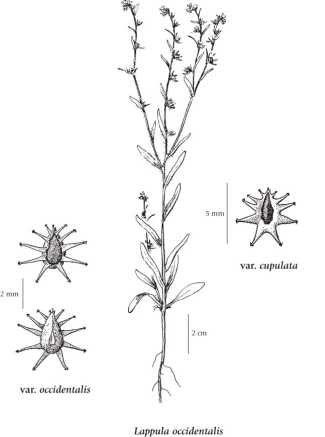Lappula occidentalis (S. Watson) Greene
western stickseed (flatspine stickseed)
Boraginaceae (Borage family)
Introduction to Vascular Plants
western stickseed (flatspine stickseed)
Boraginaceae (Borage family)
Introduction to Vascular Plants
